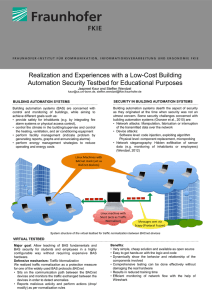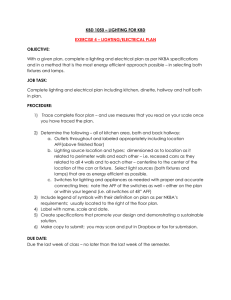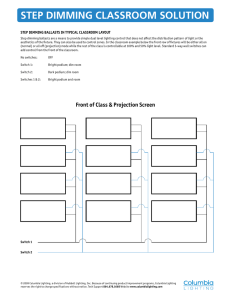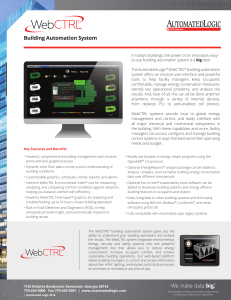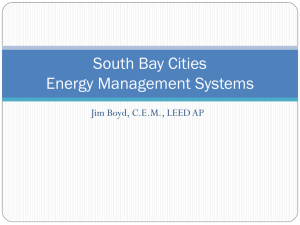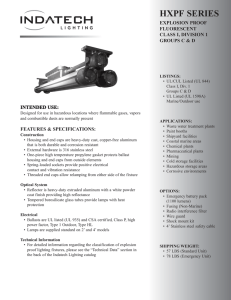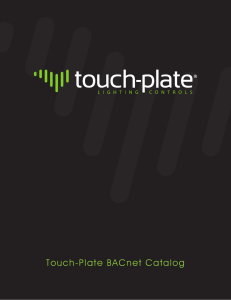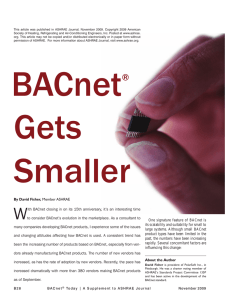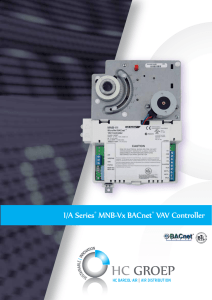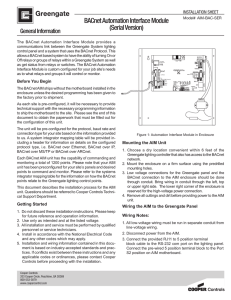Division 26 - Electrical - Facilities Operations and Development
advertisement
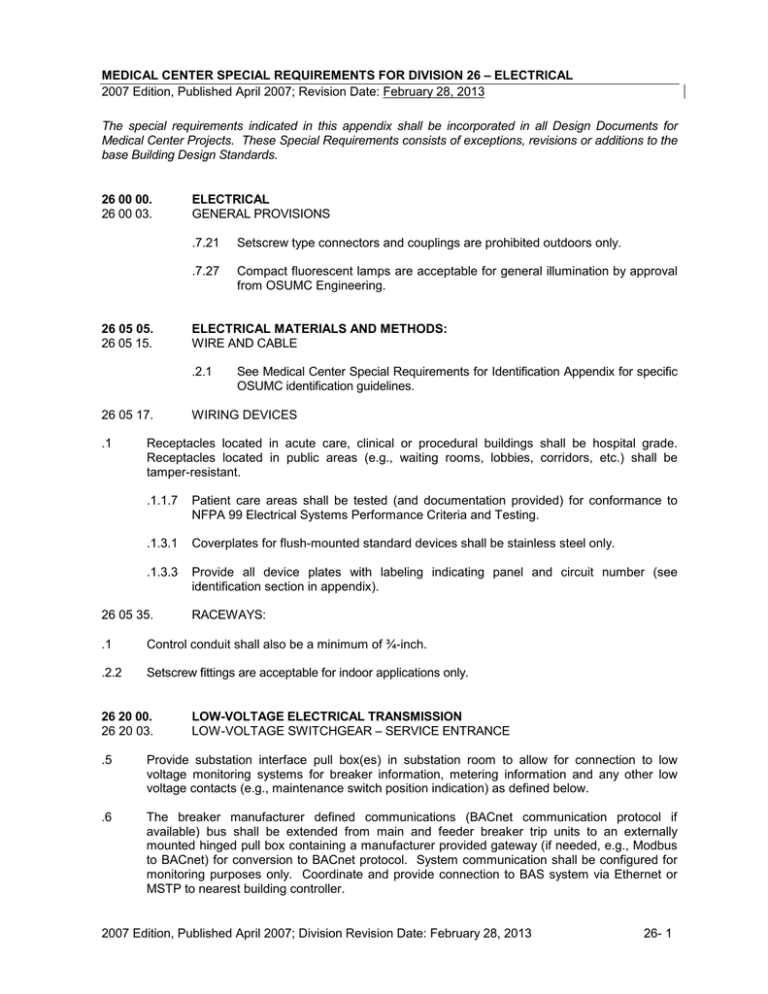
MEDICAL CENTER SPECIAL REQUIREMENTS FOR DIVISION 26 – ELECTRICAL 2007 Edition, Published April 2007; Revision Date: February 28, 2013 The special requirements indicated in this appendix shall be incorporated in all Design Documents for Medical Center Projects. These Special Requirements consists of exceptions, revisions or additions to the base Building Design Standards. 26 00 00. 26 00 03. 26 05 05. 26 05 15. ELECTRICAL GENERAL PROVISIONS .7.21 Setscrew type connectors and couplings are prohibited outdoors only. .7.27 Compact fluorescent lamps are acceptable for general illumination by approval from OSUMC Engineering. ELECTRICAL MATERIALS AND METHODS: WIRE AND CABLE .2.1 26 05 17. .1 See Medical Center Special Requirements for Identification Appendix for specific OSUMC identification guidelines. WIRING DEVICES Receptacles located in acute care, clinical or procedural buildings shall be hospital grade. Receptacles located in public areas (e.g., waiting rooms, lobbies, corridors, etc.) shall be tamper-resistant. .1.1.7 Patient care areas shall be tested (and documentation provided) for conformance to NFPA 99 Electrical Systems Performance Criteria and Testing. .1.3.1 Coverplates for flush-mounted standard devices shall be stainless steel only. .1.3.3 Provide all device plates with labeling indicating panel and circuit number (see identification section in appendix). 26 05 35. RACEWAYS: .1 Control conduit shall also be a minimum of ¾-inch. .2.2 Setscrew fittings are acceptable for indoor applications only. 26 20 00. 26 20 03. LOW-VOLTAGE ELECTRICAL TRANSMISSION LOW-VOLTAGE SWITCHGEAR – SERVICE ENTRANCE .5 Provide substation interface pull box(es) in substation room to allow for connection to low voltage monitoring systems for breaker information, metering information and any other low voltage contacts (e.g., maintenance switch position indication) as defined below. .6 The breaker manufacturer defined communications (BACnet communication protocol if available) bus shall be extended from main and feeder breaker trip units to an externally mounted hinged pull box containing a manufacturer provided gateway (if needed, e.g., Modbus to BACnet) for conversion to BACnet protocol. System communication shall be configured for monitoring purposes only. Coordinate and provide connection to BAS system via Ethernet or MSTP to nearest building controller. 2007 Edition, Published April 2007; Division Revision Date: February 28, 2013 26- 1 MEDICAL CENTER SPECIAL REQUIREMENTS FOR DIVISION 26 – ELECTRICAL .7 Main breakers shall be equipped with manual override of instantaneous trip unit settings in order to provide acceptable arc flash levels for maintenance work. Manual override position indication shall be monitored by building automation system. .8 Substation feeder breakers shall not be less than 10% of the rating of the main and tie circuit breaker ratings. 26 20 06. GROUNDING SYSTEM: .7 REFERENCE GROUND POINT: Operating Rooms, procedural rooms, invasive procedure areas that equipotential grounding between multiple sources or grounded equipment and surfaces shall have a reference ground point located within the respective room. The reference ground shall consist of a copper bus mounted inside a dedicated, acceptable enclosure. Utilizing a local power panel ground bus for this purpose is not acceptable. .8 BUILDING GROUND REFERENCE SYSTEM: Shall consist of an exposed copper bus located in mechanical rooms containing transformers on each floor (one per floor minimum). Grounding system riser drawing detail is required on the construction documents. 26 27 05. .5 GENERAL PURPOSE POWER AND LIGHTING CIRCUITS: For any panelboard (existing that has been modified or new), contractors shall provide both hardcopy and electronic copy of OSUMC panelboard legend standard (in Microsoft Excel format). Template can be provided by OSUMC Facilities Services Department. .5.1 26 30 10. Refer to Medical Center Appendix E for panel schedule requirements EMERGENCY POWER SYSTEMS: .2.1 Emergency power generators shall utilize diesel fuel engines. .2.3 See OSUMC identification standards for coloring and labeling schemes. .2.4 Emergency Power Supply Systems (EPSS’s) in critical care environments shall consist of N+1 power generation redundancy and utilize paralleling switchgear to provide increased reliability. Consideration shall also be given to the use of uninterruptible power supply (UPS) for critical and life safety branches of the emergency power system to eliminate switching interruption. External maintenance bypasses shall be provided to allow for removal and preventative maintenance of any UPS. .2.5 Provide means for non-invasive connection of load bank to emergency power generators (e.g., spare switch in emergency gear sized for 100% kW rating of generator). Emergency generator electronic control systems shall be monitored via building automation system. If needed, protocol gateways shall be provided to convert generator protocol information to BACnet protocol (e.g., Modbus to BACnet). Provide Ethernet jack in emergency generator locations to allow for connection to BACnet Ethernet backbone. .2.6 .2.7 EPSS fuel system shall also be monitored via building automation system. If dry contact indications are furnished with daytank and main fuel tank monitoring systems, provide connection to building automation system. .3.7 Loads connected the emergency power systems shall be as defined in NFPA 70 for critical, life safety, equipment and delayed equipment branches. 2007 Edition, Published April 2007; Division Revision Date: February 28, 2013 26- 2 MEDICAL CENTER SPECIAL REQUIREMENTS FOR DIVISION 26 – ELECTRICAL .3.8 Consideration shall be given quantity of transfer switches and respective loads to allow for load shedding in circumstances of emergency power system diminished capacity. .5.1 Transfer switch control panels shall be provided with communications package to allow real time monitoring. Transfer switches shall be monitored via building automation system. If needed, protocol gateways shall be provided to convert generator protocol information to BACnet protocol (e.g., Modbus to BACnet). Provide Ethernet jack in transfer switch locations to allow for connection to BACnet Ethernet backbone. .5.2 Delayed transfer switches shall have capability of “0 seconds” transfer time between normal and alternate sources. Those switches with minimum 1 second delay time are not acceptable. .5.3 Transfer switches shall be of the bypass isolation type to enable servicing of equipment without shutdown. All bypass-isolation handles/controls shall be externally mounted and not require access into the enclosure for operation. Switches shall be capable of manual operation under load and be quick-make, quick-break. The switch shall have the capability of being fully manually operated and not be dependent upon electrical operators, relays or further interlocks for safe operation. 26 50 00. 26 51 00. .1.6 LIGHTING INTERIOR LIGHTING Ballast shall include a maximum Total Harmonic Distortion of 10%. .1.7.F. Total harmonic distortion shall be less than 10%. .1.8 Battery powered emergency egress lighting, when used, shall be self-diagnosing type (momentary monthly testing and 90 minute annual test). Consideration shall be given to a central battery capable of handling multiple remote heads for those areas with multiple battery powered egress fixtures (e.g., mechanical or emergency power distribution rooms) .1.9 Battery ballasts shall be provided with wall mounted, remote testing switches. .5 Compact fluorescent lamps: 13W, 18W, 26W 2 or 4-pin, biax lamps (3500K, CRI of 82), 32W triple biax lamps (3500K, CRI of 82) or 40W high lumen biax lamps (3500K, CRI of 82). .5.1 Provide brushed aluminum type housing for exit signs. .12 Procedure or operating rooms requiring dimming or frequent switching during a procedure shall utilize Lutron Graphic Eye dimming system. System shall utilize Hi-Lume 1% dimming ballasts and be controlled via procedure equipment dry contact closure. Contact closure shall toggle between full “on” and full “dim” to avoid the on/off switching that causes high lamp mortality. .13 Procedure or operating room fixtures containing green fluorescent lamps shall utilize ballasts that operate either green or traditional fluorescent lamps. Those ballasts that operate green lamps only are not acceptable. .14 Patient rooms with reading and general lighting shall interface with nurse call system. Both general and reading lights shall be controlled individually via both nurse call paddle and room entry momentary toggle switches. .15 Corridor, waiting area and lobby lighting in patient care areas shall be controlled from nurse station at a minimum. 2007 Edition, Published April 2007; Division Revision Date: February 28, 2013 26- 3 MEDICAL CENTER SPECIAL REQUIREMENTS FOR DIVISION 26 – ELECTRICAL 26 58 00. .2 LIGHTING CONTROL Exterior lighting control relays shall be controlled via building automation system. If lighting control consists of a system of control relay panels (e.g., Lutron, Lithonia, Delta), they shall be BACnet compliant and interfaced with building automation system. END OF DIVISION 26 - ELECTRICAL 2007 Edition, Published April 2007; Division Revision Date: February 28, 2013 26- 4
